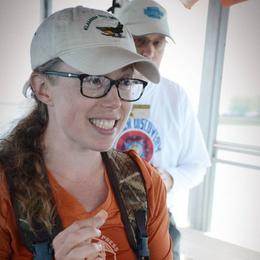Black Terns will be returning from the coastal areas of Central and South America to their breeding grounds across Michigan over the next several weeks. These graceful, Robin-sized colonial waterbirds will nest in the coastal and inland marshes of Michigan where they will build their nests on floating mats or rafts of dead, crushed bulrush and cattail, and feed on insects and small fish. In its choice of surroundings, the Black Tern leads a double life: in North America in the summer, it is a typical bird of freshwater marshes, but in winter, it becomes a seabird along tropical coasts.
Unfortunately, these charismatic marsh birds have seen population declines globally since the 1960s, and up to 71 percent of our Black Tern population has been lost here in Michigan. The Black Tern is a Michigan Species of Special Concern, State Wildlife Action Plan focal species, and is now state-listed in all other Great Lakes states. The reason for this population loss is poorly understood, but Audubon Great Lakes and several partners are working towards understanding the underlying cause of the decline and developing conservation strategies that can help bring these birds back.
Since 2013, Audubon Great Lakes, Detroit Audubon, Michigan DNR, Common Coast Research and Conservation and several other partners have studied Black Terns at St. Clair Flats State Wildlife Area, Michigan with the primary goals of estimating colony size and breeding success. St. Clair Flats is one of Michigan’s wetland wonders for waterfowl hunting, but the site also doubles as an Audubon Important Bird Area that provides important habitat for Michigan’s largest colony of Black Terns. Explore our interactive Story Map to learn more about this project.
Recent research shows that colony abandonment, likely due to invasive species, is occurring at a faster rate than the population decline, and suggests that large Black Tern colonies like those at St. Clair Flats are the most in-need of protection.
You can help inform our future conservation efforts! Help us understand Black Term demographics, including the number of breeding pairs, newly hatched young, and returning adults, as well as the location of active colonies. This dataset will help identify priority conservation areas for Black Terns across the state and inform conservation action plans that will guide wetlands management at key sites. We are looking for volunteers to participate in breeding Black Tern Surveys across the Lower Peninsula. This monitoring effort requires just two site visits between June 1 and July 31, and one rapid habitat assessment. A virtual volunteer training session will be provided. Sign-up to volunteer today!
Can’t volunteer, but still want to help Black Terns? Record your Black Tern observations to eBird and keep your eyes peeled for color-banded individuals! Submit any color-band sightings to the Bird Banding Lab.
ABOUT MI BIRDS
MI Birds is a public outreach and education program created by Audubon Great Lakes and Michigan Department of Natural Resources, which aims to increase all Michiganders' engagement in the understanding, care, and stewardship of public lands that are important for birds and local communities.





